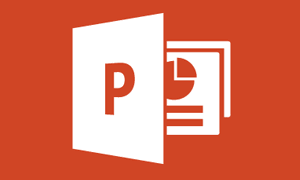As a facilitator who is passionate about face to face communication and in particular teaching and learning about customer service I have become alarmed at the continuing proliferation of email in customer service related matters. Inevitably, organisations will at some point have to handle aggrieved customers. Whilst the customer concern or complaint may arrive at the organisation via email it is better to utilise a different method of communication in response to customers concerns.
In most situations it is not appropriate to respond to a customer concern or complaint via email. Email responses quite often leads to a more dissatisfied customer as miscommunication will most likely occur. Organisations and individuals will have better results and more pleasant and rewarding interactions with customers if they can make the switch to verbal communication. Or should that be – make the switch back to verbal communications?
The fact that the customer initiated the interaction via email probably says more about your own organisations preferred communication processes than it does about the preferred communication style of the customer. Many organisations are now actively discouraging interaction via phone by hiding phone contact details from their organisational web sites and instead directing customers to contact them via email. “Put it in writing” has become a catch phrase when complaining. It is true that some customers may prefer a written response but is it what they really want or need?
In little over 20 years email has surpassed centuries of letter writing to be the most common form of written communication. Handwritten letters have become almost extinct. It is hard to imagine the world before the advent of email.
Email has many benefits. The ability to attach documents to send worldwide in an instance is still remarkable in my eyes and having a “paper trail” has proven to be a saviour when disputes arise. With the seemingly endless adoption of this new written communication tool it is easy to miss some of the downsides that email brings to how we communicate and how effective we are at it.
What customers want is a difficult and ever changing question, however it is clear from surveys that customers want to be cared about. They are after an interaction that makes them feel valued and special. These experiences, when received, stand out from the crowd and live on in the memory of the customer. It is through personal, caring and empathetic interactions that customers get a sense of being valued. I like to call this element of customer service “the care factor”. Communicating face to face with customers optimises care factor as body language and tone can convey this message more successfully than other forms of communication. Even the telephone has the ability to convey a sense of body language through tone. It is only via written communication where the care factor evaporates. It is almost impossible to convey body language and tone via email and therefore it is left up to the recipient to decide on the level of care factor being demonstrated.
We communicate to be heard, to convey ideas and to inform. To be successful in communicating with others, a message needs to be received by the recipient the way we intended it to be received.
When engaged in face to face communication the recipient of our message has the ability to take cues from not only our words but also our voice and body language. Whilst the importance of body language is often overestimated it is worth noting that whenever there is a contradiction between the words used and the body language displayed, the body language wins out as the true message being delivered. Any parent who knows when their child is telling a porky can testify to this. The words may lie but the body language gives the game away. When voice and body language have been removed from the communication as they are in email it is left up to the recipient of the message to interpret voice and body language. It is this interpretation that leads to misunderstanding and a breakdown in the communication. Without the visual and auditory cues we are quite often deaf and blind when trying to decipher emails.
Not only are we not very good at interpreting voice and body language via email we also over estimate how good we are at writing emails.
Here is an experiment I conduct whilst facilitating. Ask yourself this question: What percentage of the emails you send everyday are:
- Clear
- Concise, and
- Easily for the recipient to understand?
The average response to this question is around 80% with people accepting that sometimes they may not put the care into the email but in the vast majority of cases their own emails are clear, concise and easy to understand. I then ask what percentage of the emails they receive on a daily basis are clear, concise and easy to understand. It is no surprise that the answers given are a much lower percentage. Their answer may be even lower still as there is no guarantee that what they thought they understood in the email is what the sender intended to be understood.
Although this is a simple experiment, it clearly demonstrates that we have a self-inflated view of our own email writing ability whilst criticising others ability. In psychology this is known as egocentrism whereby people have difficulty detaching themselves from their own perspectives and understanding how other people will interpret them. Although as the writer of an email we have the ability to “hear" the tone we intend our e-mail to convey the receiver of our email does not have access to this extra and vital information.
Nicholas Epley, PhD, of the University of Chicago, who has published research that helps explain why email misunderstandings occur suggests: "E-mail is fine if you just want to communicate content, but not any emotional material.” When a customer takes the time to complain you can safely assume there will be emotion involved. Do yourself and your organisation a favour and pick up the phone!
Customers who have a complaint can quite often be turned into ambassadors for your organisation if that complaint is handled in an appropriate and empathetic manner. Next time a customer has a complaint about your organisation are you going to exacerbate the situation via email or pick up the phone and turn that customer into an ambassador for life?
Ian Fraser presents Taming the Email Monster in a 1 hour presentation as well as communication skills and customer service training. If you would like Ian Fraser to present his techniques and tips at your organisation please contact us.



